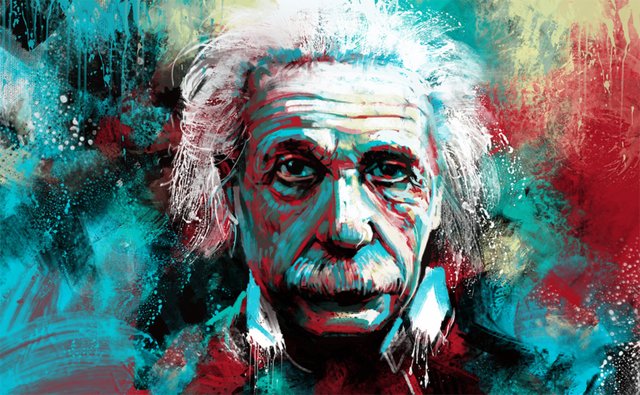Albert Einstein - the Universe and Physics #8
With Einstein's general theory of relativity, the idea of the cosmos had fundamentally changed. The eternally dormant universe had become a dynamic, developing universe whose future is uncertain. For if the forces of gravity are too small to stop the flight of the galaxies, our universe will fly apart for eternal times. But if the mass of stars and galaxies is large enough, the forces of gravity will triumph and the whole cosmos will collapse.
The outcome of this cosmically beautiful gravity is still uncertain. Despite all its successes, the general theory of relativity was very controversial in the first decades of its existence. Physicists and astronomers found it difficult to imagine a curved space-time and the time phenomena that should be associated with it. Moreover, the mathematics of the theory was very complicated. It was easier to calculate with newton's formula, especially since the gravitational fields in our solar system are so weak that relativistic deviations do not yet play a major role.
Science fiction authors were as so often pioneers of the new discovery when in 1967 in the television series Star Trek Captain Kirk got into the gravitational field of an unlisted black star with his spaceship, astronomers had no idea if black holes really existed.
Although Karl Schwarz Schild had already provided the first theoretical description of black holes in 1916 when he calculated special gravitational states according to Einstein's general theory of relativity, nobody seriously believed in their existence at that time. Today, we are convinced that there are millions of black holes in every galaxy. Telescopes orbiting the earth, like the Hubble space telescope have opened our eyes. At the intersection of two galactic currents, Hubble identified a massive black hole also in the center of our milky way, that constantly devours immense material, nothing can escape, nothing can leave it anymore, not even the light.
When a star dies, it leans up in violent explosions against the forces of its own heavy mass and hurls a part of its matter into space. If the remaining mass has enough, a gravitational collapse can occur. Due to the force of mass attraction, it collapses and its gravitational field grows immeasurably. A black hole has formed.
According to Einstein's general theory of relativity, a gravitational collapse caused by a sudden change in the curvature of space-time would cause a quake to run through our universe, gravitational waves, similar to when a stone falls into the water and a wave is perceived on the shore. But so far all attempts to detect gravitational waves have failed with complicated measuring devices like this gravitational wave detector.
About 100 years later, on 14 September 2015, the first direct detection of gravitational waves was achieved with the Advanced LIGO detectors in the USA. The measured signal came from two black holes that orbited each other, came closer and closer, and finally merged. Three more signals followed, all from merging black holes.
 Part 7
Part 7

 Part 9
Part 9 



Probably everything about Einstein has already been said, but I love this guy. However, in my case it's more his political writings (and frankly the fact that he proposed the united nations well before it was cool). I definitely recommend checking them out.
i will, ty @cogitor
Hi, @oendertuerk!
You just got a 1.3% upvote from SteemPlus!
To get higher upvotes, earn more SteemPlus Points (SPP). On your Steemit wallet, check your SPP balance and click on "How to earn SPP?" to find out all the ways to earn.
If you're not using SteemPlus yet, please check our last posts in here to see the many ways in which SteemPlus can improve your Steem experience on Steemit and Busy.